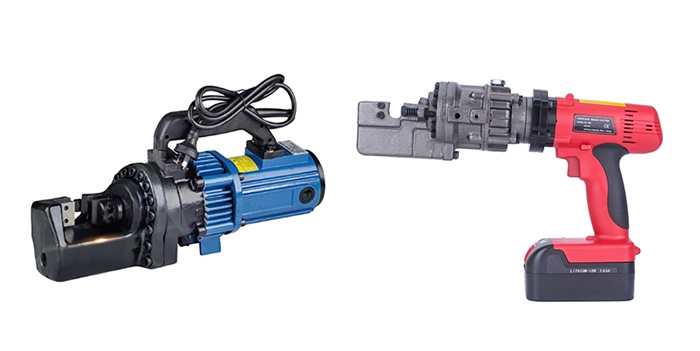How to Operate and Maintain a Rebar Cutter?
Science and technology are progressing, and the times are progressing. From people's daily life to industrial production, science, and technology are indispensable both inside and outside. Nowadays, rebars are indispensable materials in bridges, other buildings, and large-scale projects. Correspondingly, when workers operate, they will inevitably use some rebar processing machinery and equipment to straighten and cut off, which is our commonly used rebar cutter.
However, the rebar cutter will inevitably wear in the use process, especially if the blade of the rebar cutter is vulnerable, improper use will directly reduce the service life of the machine, thus increasing the project cost. In fact, there are many points that need attention in the process of using the rebar cutter, and reasonable maintenance after use will delay the wear of tools. Today, ATO industrial automation will take you to know the correct use method and maintenance tips for rebar cutters.

The method of operating the rebar cutter correctly
Preparation before operation
- Before the operation, the firmness and position of the fixed knife and moving knife must be checked;
- Check whether the rebar cutter is well lubricated and whether the oil supply system is smooth;
- It is very necessary to check whether the protective facilities are complete and reliable, whether the motor is firmly connected to the red, whether the grounding is good, and whether the voltage is consistent.
Requirements in operation
- The rebar cutter starting device should be located in a convenient place for the operator, and should be adjusted in time if there is any change;
- When cutting fine rebar, the rebar should be put straight and cannot form an arc;
- When cutting, hold the rebar tightly, and when the movable blade retreats, send the rebar into the blade to prevent the end of the rebar from swinging or jumping out and hurting people. When the movable blade advances, do not send the rebar to the blade to prevent machine or life safety accidents.
Response to emergencies
- In the process of cutting and batching, if the rebar is found to be cracked, the shrunken or severely bent head must be removed;
- Experienced operators know that it is strictly forbidden to cut rebar that exceeds the specified range of machine performance and rebar that exceeds the hardness of the blade or burns red.
Maintenance tips for rebar cutter
Anti-rust paint or lubricant
The rebar cutter should always be kept clean. A newly purchased rebar cutter is painted, when the machine is not in use, try to apply anti-rust paint or lubricant to prevent the machine from rusting, especially the blade. Through lubrication, the friction loss and wear of the relatively moving contact surface can be reduced, and it can play the role of cooling, heat dissipation, rust prevention, and removal of wear debris.
Check whether the attachment is firm
After the rebar cutter has been used for a long time, it is necessary to check whether the bolts and other accessories of each part are firm. If the attachment is not firm, it will generate noise pollution, affecting workers and the machine itself. Mechanical operations are often long-term and high-intensity environments and the noise pollution caused by accessories will affect work efficiency and cause serious machine loss.

